Lizards are the most commonly seen reptiles in backyards. They are most closely related to snakes. Actually, some lizards, called sheltopusiks, look like snakes because they have no legs. Most of lizards today resemble the ancient reptiles of the dinosaur era. Their ancestors appeared on Earth over 200 million years ago. There are numerous species of lizards spread all over the world.
1 / 21
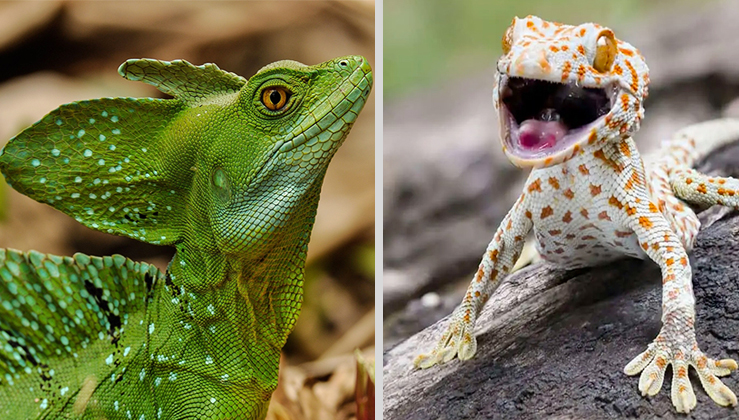
Generally, lizards have a small head, short neck, and long body and tail. Unlike snakes, most lizards have moveable eyelids. There are currently over 4,675 lizard species, including iguanas, chameleons, geckos, Gila monsters, monitors, and skinks. Different species of lizards have different distinct characteristics making them interesting to study. Some of them even look prehistoric or like creatures out of a fantasy novel. Let’s dive right in to the cutest lizards in the world.
2 / 21
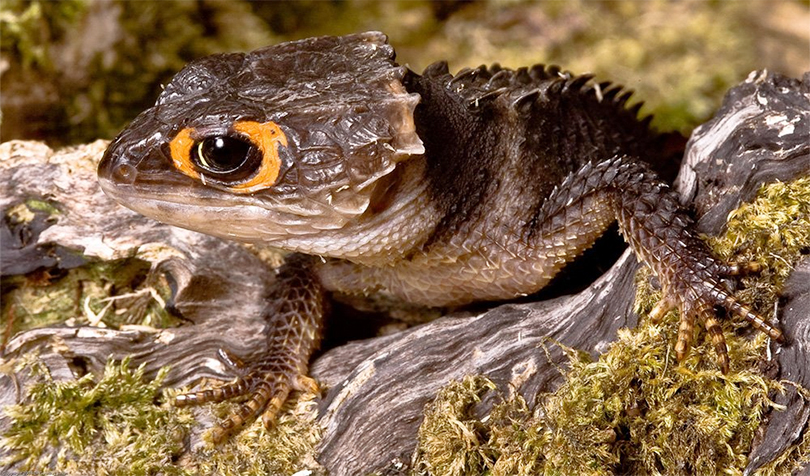
Red-Eyed Crocodile Skink (Tribolonotus gracilis): is a species of skink that is sometimes kept as an exotic pet. It is endemic to New Guinea, where it lives in tropical rainforest habitats. these tiny lizards are some of the cutest lizards in their class! They have dark-colored bodies except around their eyes, which are surrounded in bright orange, similar to a raccoon. The Red-Eyed Crocodile Skink looks like something out of a fairytale.
3 / 21
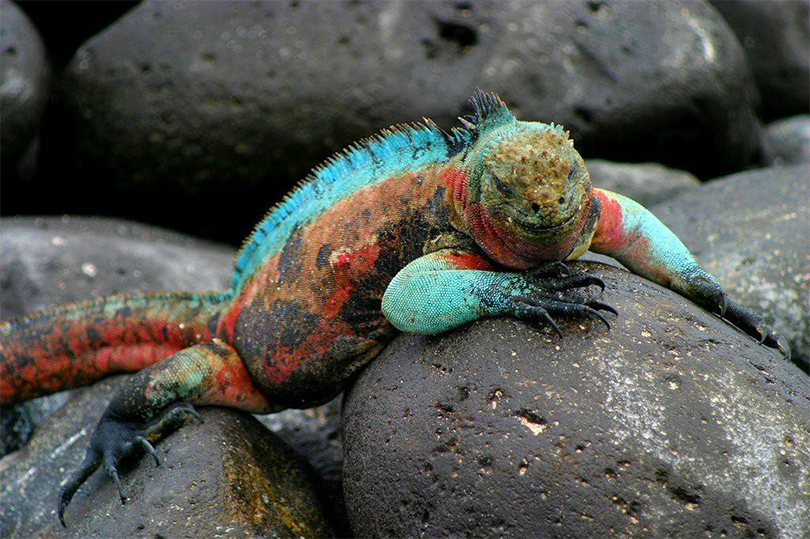
Marine Iguana: This creatures are the only lizards on Earth that spends time in the ocean. They live only on the Galapagos Islands, and like many Galapagos species, they have adapted to an island lifestyle. Populations across the archipelago have been isolated from each other for so long that each island has its own subspecies. Marine iguanas are also known for their very efficient salt glands, where they “sneeze” out salt. They are endemic to the Galapagos Islands and are the only marine lizard species in the world.
4 / 21
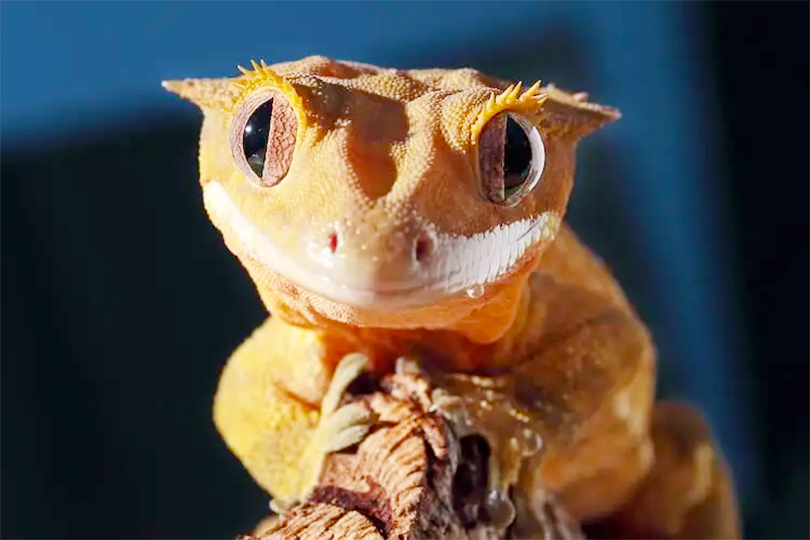
Crested Gecko (Correlophus ciliatus): This is a species of gecko native to southern New Caledonia (France). With their frog-like toes and tiny bodies, Crested Geckos are some of the cutest lizards ever. They have prehensile tails that can curl around branches and other structures, which helps them steady themselves. After all, they are arboreal creatures, which means they make their homes in the canopies of trees.
5 / 21
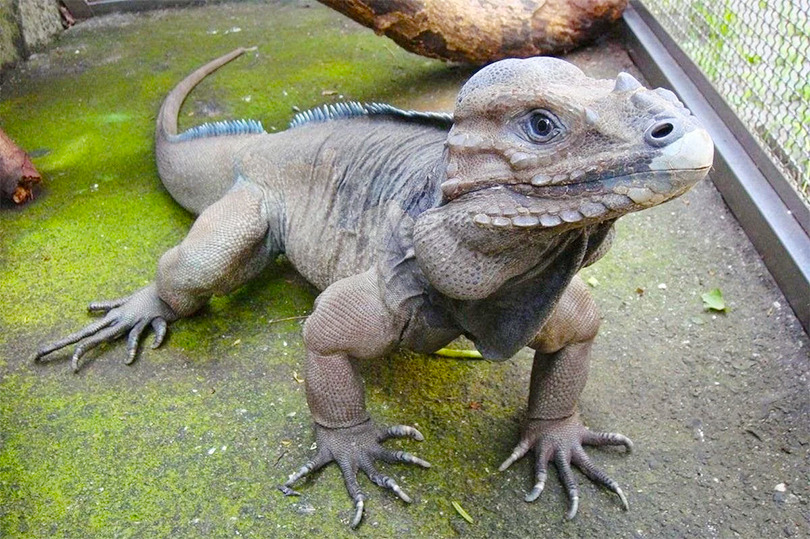
Rhinoceros Iguana (Cyclura cornuta): This species is an endangered species of iguana that is endemic to the Caribbean island of Hispaniola (shared by Haiti and the Dominican Republic) and its surrounding islands. A large lizard, they vary in length from 60 to 136 centimetres (24 to 54 in), and skin colours range from a steely grey to a dark green and even brown. Their name derives from the bony-plated pseudo-horn or outgrowth which resembles the horn of a rhinoceros on the iguana’s snout. It is known to coexist with the Ricord’s iguana.
6 / 21
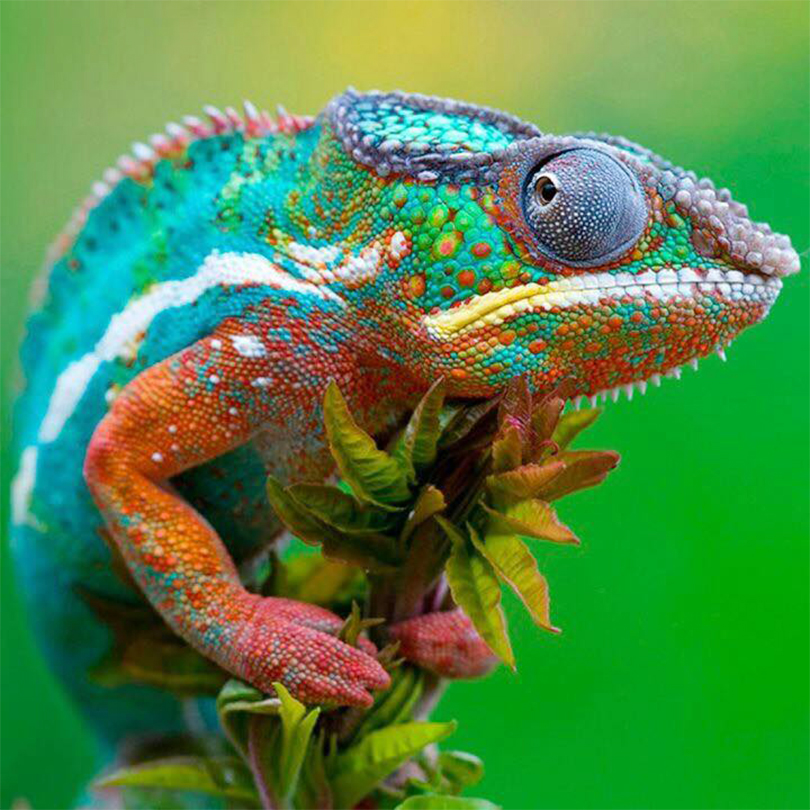
Panther Chameleon (Furcifer pardalis): This is a species of chameleon found in the eastern and northern parts of Madagascar[1][3][4] in a tropical forest biome. This camelon is perhaps the most beautiful of the cutest lizards on our list. This reptile is well-known for its ability to change colors and has a myriad of bright hues in its repertoire. With tiny eyes and long, fast tongues, there’s no denying that these creatures are seriously adorable.
7 / 21
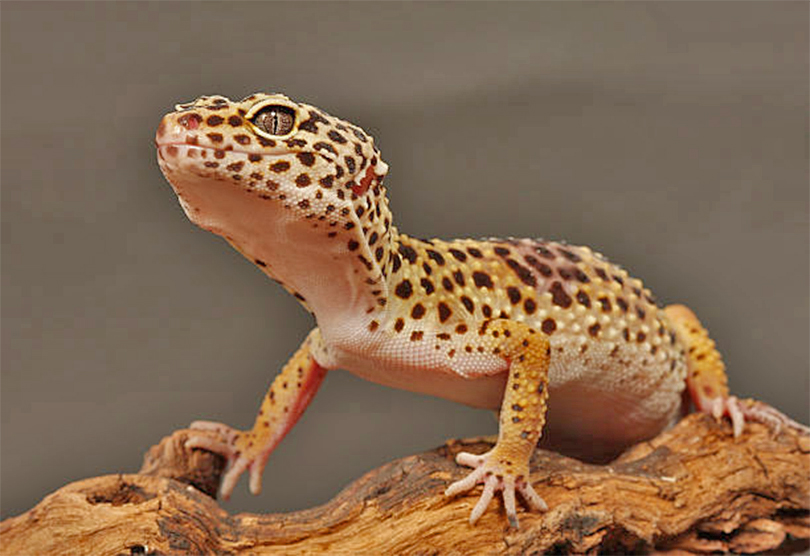
Leopard Gecko (Eublepharis macularius): This lovely lizards can smile. They might be considered the happiest, cutest lizard of them all. They are also extremely docile and friendly, which makes them fantastic pets. They are the perfect example of a starter reptile for a new owner. Leopard geckos come in a variety of different colors. Their eyes are also large in comparison to the size of their heads, which makes them doubly adorable. It’s widely known that even people who typically despise reptiles can’t deny the cuteness of leopard geckos.
8 / 21
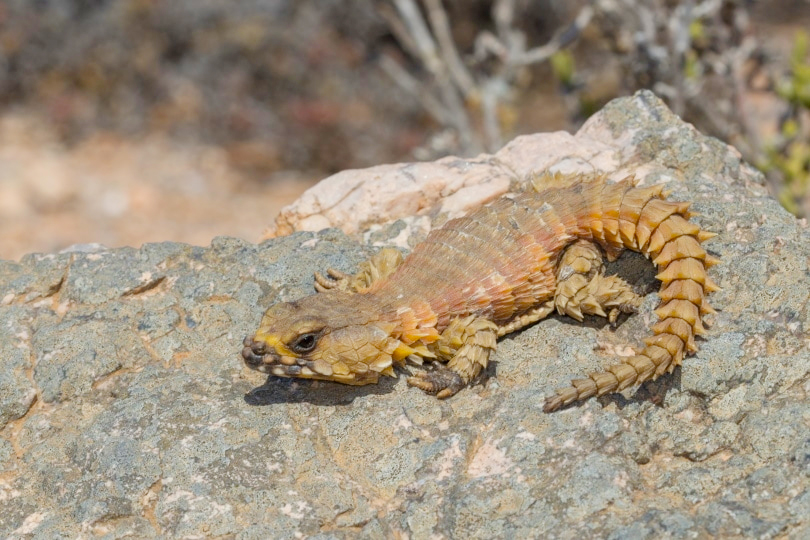
The Armadillo girdled lizards (Ouroborus cataphractus): They inhabit the desert and semi-deserts regions. This lizards are mostly found along the western coast of South Africa. They were initially used in the pet trade before they became endangered. They are either light brown or dark brown in color, with their underbelly being yellow and blackish in stripes. Armadillo girdled lizards are diurnal reptiles. They feed on small invertebrates, plants, and other species of small lizards and rodents. If it senses danger, the armadillo girdled lizard puts its tail in the mouth to form a spherical shape that enables it to roll. In this shape, its spikes on the back are exposed which protects it from predators.
9 / 21
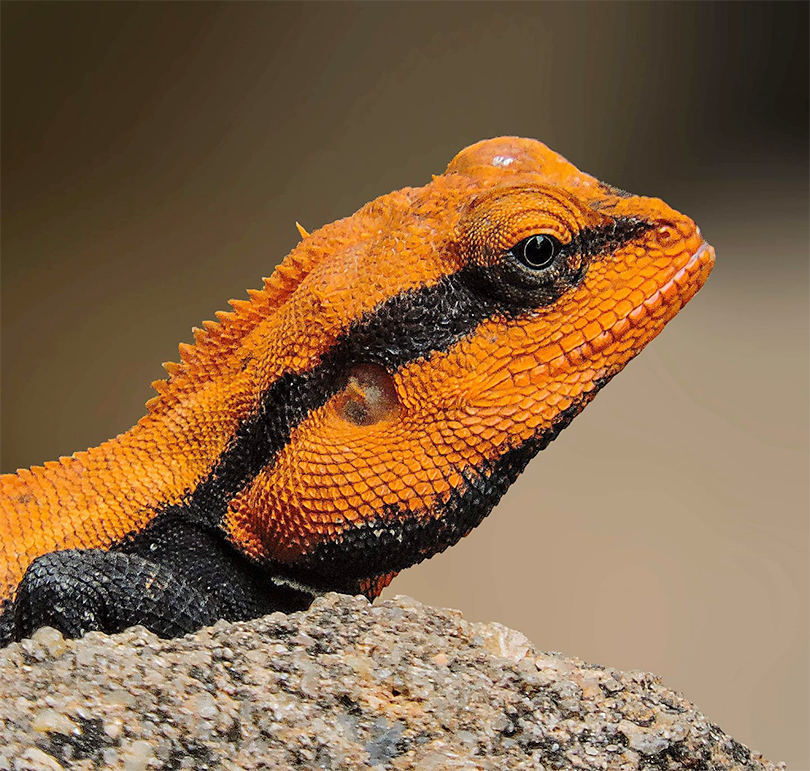
The peninsular rock agama (South Indian rock agama) (Psammophilus dorsalis) is a common species of agama found on rocky hills in south India. They are normally 13-30cm long with the males measuring 3 to 5 inches longer than the females. The lizards normally live in a small group with one male as the leader. The lead male is allowed to mate with the females, but the other males cannot mate with any female in the group, unless they eliminate the lead male or form their own group. Rock agamas feed on insects, reptiles, small mammals, and vegetation.
10 / 21
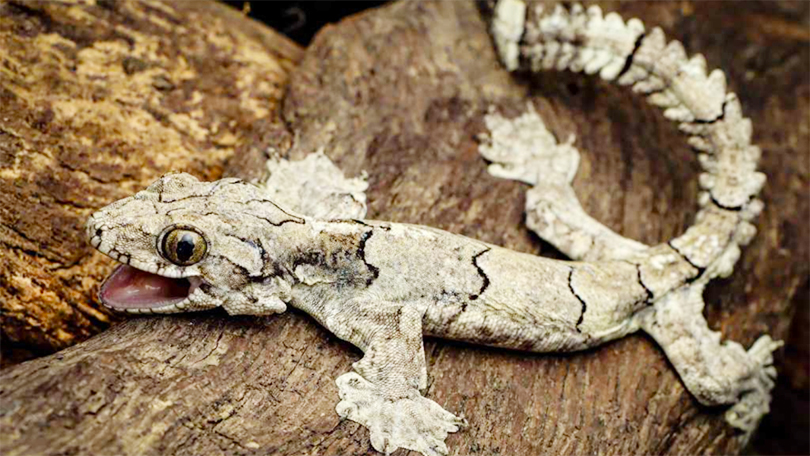
Flying Gecko: It is also konown as Kuhl’s flying gecko or Kuhl’s parachute gecko. This is a species of lizard in the family Gekkonidae. Flying Gecko is found in Southeast Asia. They have flaps on the sides of their body. Their feet are webbed and feed on crickets, wax worms, and mealworms. They are nocturnal. The males become territorial and are difficult to contain in a cage. They camouflage with the bark of trees which makes it difficult to see them, helping them to escape and hide from the predators.
11 / 21
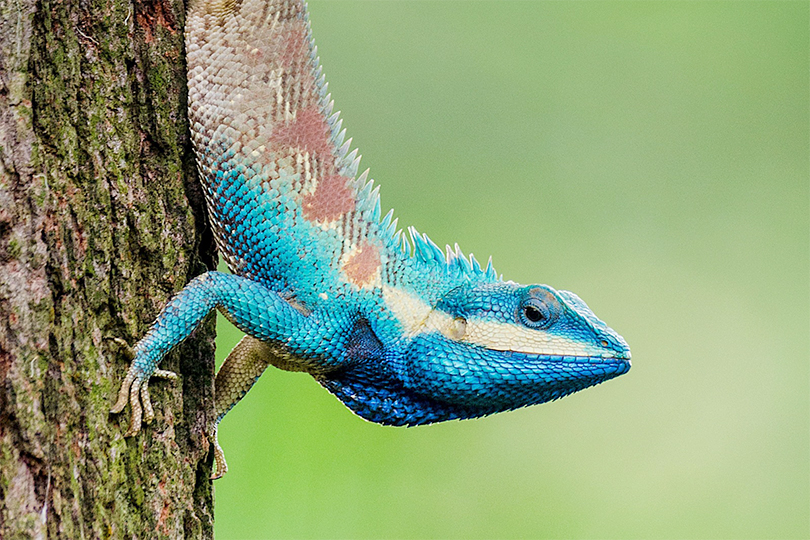
Blue Crested Lizard (Calotes mystaceus): This colorful species is an agamid lizard found in China, South Asia and Southeast Asia. Their facial features are tiny, with small eyes and a tiny mouth with spikes at the base of their heads. Even though they aren’t soft or silky, they are still among the cutest lizards in their habitats. This lizards are also extremely intelligent and are kept as pets in many parts of the world. However, unlike common reptile pets such as Bearded Dragons and Leopard Geckos, Blue Crested lizards are not the friendliest. While there’s no doubt that they are easy on the eyes, they are not ideal for those who want to handle their lizard.
12 / 21
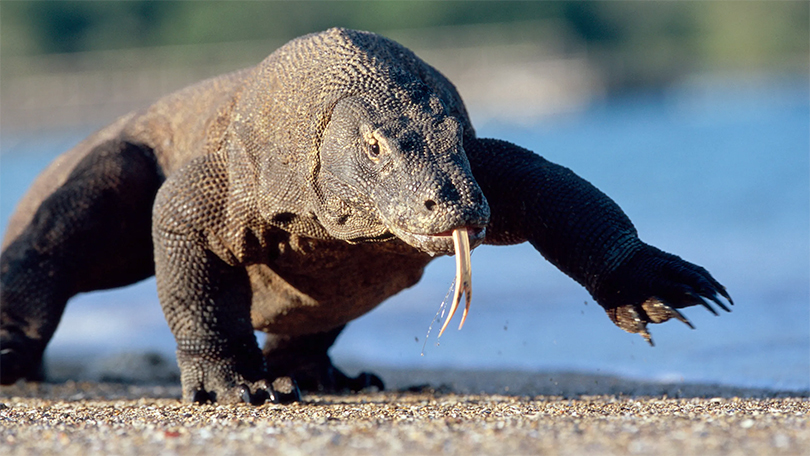
Komodo Dragon (Varanus komodoensis): It is a reptile species belonging to Varanus genus. It is native to the Indonesian islands of Komodo, Rinca, Flores and Gili Motang. The Komodo dragon is the largest known species of lizard. It is found on the Indonesian islands of Komodo, Rinca, Flores, and Gili Motang. Mature Komodo dragons usually weigh 70kgs on average and measure approximately 3 meters long. It hunts by ambushing the prey which includes birds, invertebrates, small mammals, and in rare cases, human beings. Its bite is venomous.
13 / 21
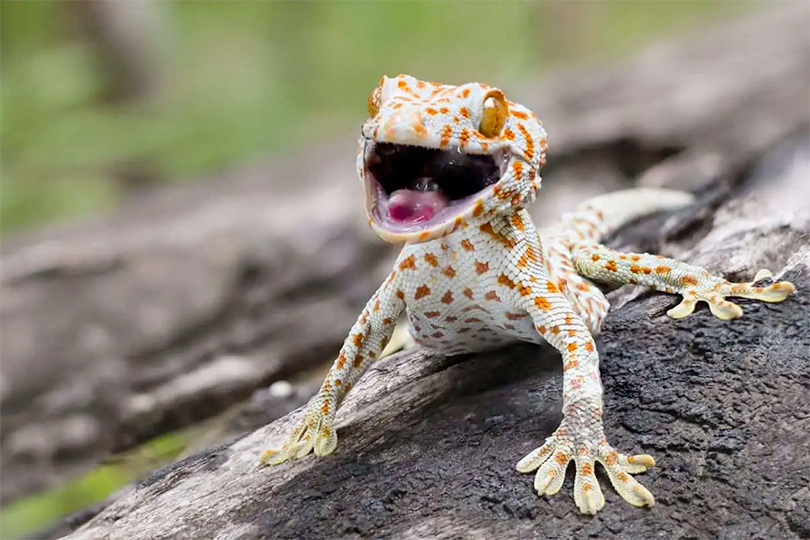
Tokay Gecko (Gekko gecko): It is a nocturnal arboreal gecko in the genus Gekko, the true geckos. It is native to Asia and some Pacific Islands. This species is found in northeast India, Bhutan, Nepal, and Bangladesh; throughout Southeast Asia, including Thailand, the Philippines, Malaysia, Vietnam and Indonesia; and toward western New Guinea. Its native habitat is rainforest, where it lives on trees and cliffs, and it frequently adapts to rural human habitations, roaming walls and ceilings at night in search of insect prey. This is an introduced species in some areas outside its native range. It is established in Florida in the United States, Martinique, the islands of Belize, and possibly Hawaii. The tokay gecko is culturally significant in many East Asian countries. Regional folklore has attributed supernatural powers to the gecko. In Southeast Asia it is a symbol of good luck and fertility. It is believed to be descended from dragons.
14 / 21
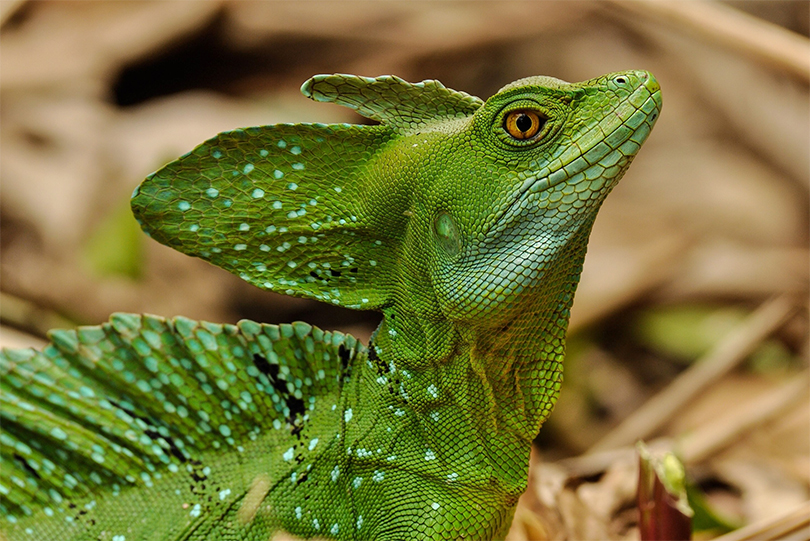
Emerald Basilisk Lizard (Jesus Christ Lizard): This beautiful lizard (Basiliscus plumifrons), also called the green basilisk, double crested basilisk, or Jesus Christ lizard. It is a species of lizard in the family Corytophanidae. The species is native to Central America. The plumed basilisk’s native range spans southern Mexico and northern Colombia. B. plumifrons inhabits hot, humid rainforests that contain streams, rivers or other water bodies. The physical appearance of the plumed basilisk is striking: it sports a bright green color along its body with black and white streaks along its neck and back. Their physical appearance differs by sex, as they are sexually dimorphic; males have a distinct crest on the back and tail and large plumes on top of their heads, while females typically only have a singular, much smaller, crest on their head. This green lizard is unique in its ability to run across water with speed and the method it employs to do this. It displays the behaviour as a threat response, when fleeing predators. High speed is maintained in order to prevent sinking.
15 / 21
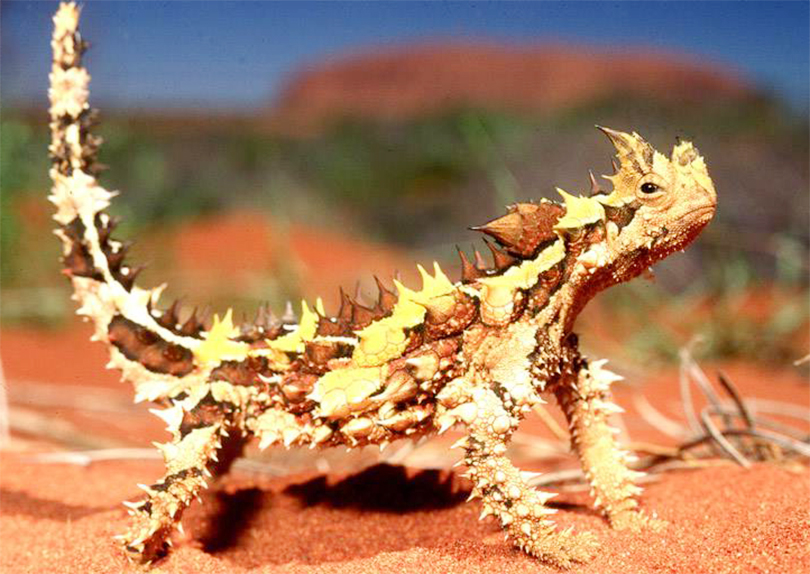
Thorny Dragon (Moloch horridus): It is also known commonly as the mountain devil, thorny lizard, thorny dragon, and moloch, is a species of lizard in the family Agamidae. The species is endemic to Australia. It grows up to 20cm with a lifespan of between 15 to 16 years. Its color is normally desert brown or tan. It camouflages during cold weather to form a darker shade of its normal color. Its body is covered in spikes for defense. The lizard has soft tissues that resemble its head.
16 / 21
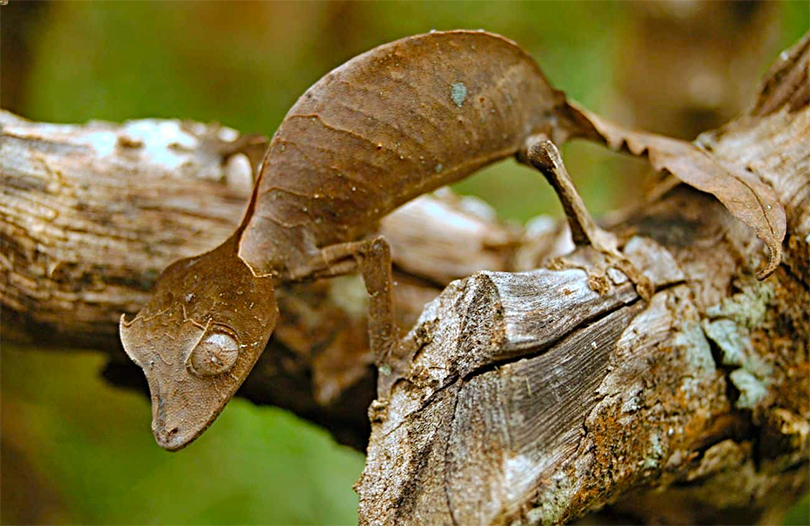
Leaf-Tailed Gecko (the satanic leaf-tailed gecko): Uroplatus phantasticus, eyelash leaf-tailed gecko or the phantastic leaf-tailed gecko, is a species of gecko indigenous to the island of Madagascar. This specious is among the cutest lizards due to their giant eyes and interesting patterns. They have tiny, circular toes and tiny bodies. It is only measures between 2.5 and 3.5 inches long. They are arboreal creatures that live high up in the trees.
17 / 21
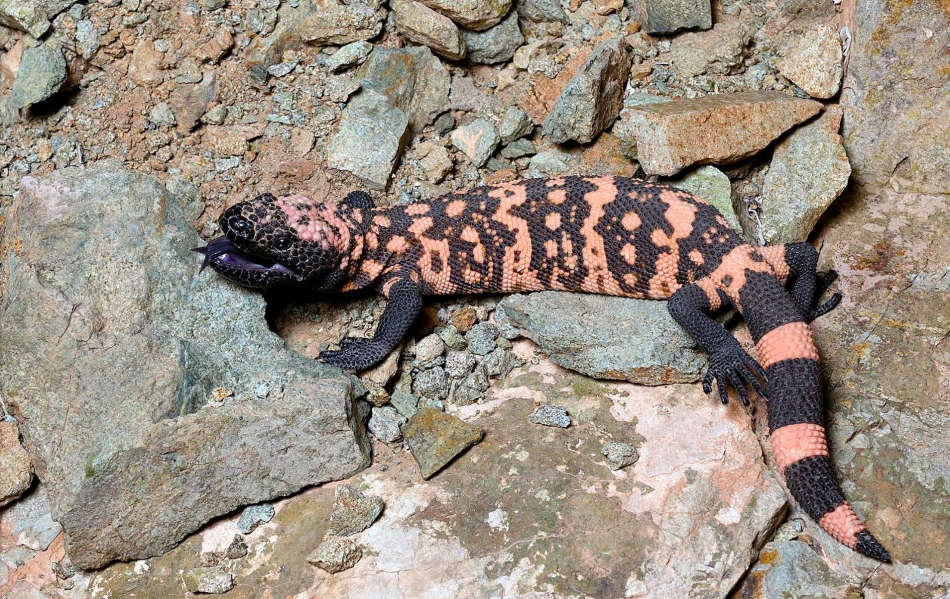
Reticulate Gila Monster (Heloderma suspectum): It is a species of venomous lizard native to the Southwestern United States and the northwestern Mexican state of Sonora. They have flattened, triangular shaped heads, with the males having bigger heads than the females. They have long, fat and cylindrical torso, with females having a broader torso. Their diet consists of reptile eggs, birds and rodents. Their hunting skill is empowered by their strong sense of smell and hearing. They can hear vibrations of their prey from far away and smell buried eggs.
18 / 21
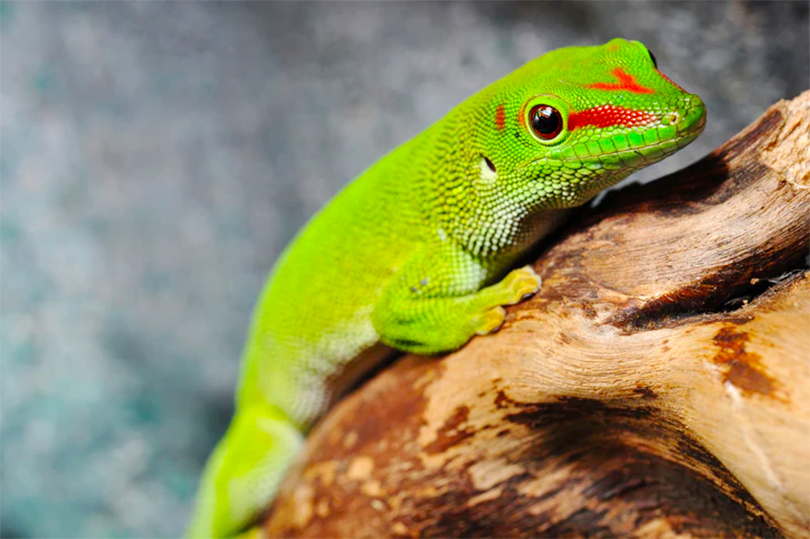
Madagascar Day Gecko (Phelsuma madagascariensis madagascariensis): It is a diurnal species of gecko. This lizard has a long, green body with orange accents on their heads and along their backs. Their petite facial features and mouth that almost comes into a smile make them a great contender for our cutest lizards list. They spend the majority of their time awake while the sun. They can grow to be up to 8.7 inches long as adults.
19 / 21
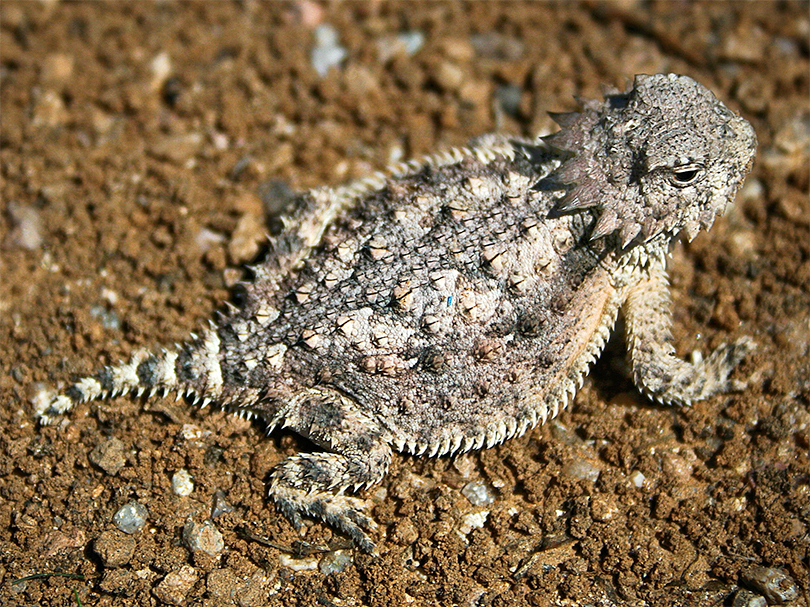
Desert Horned Lizard (Phrynosoma platyrhinos): This is a species of phrynosomatid lizard native to western North America. They are often referred to as “horny toads”, although they are not toads, but lizards. Their sand-colored skin, small eyes, and tiny spikes are just a few things that make this lizard seriously adorable. These adorable desert dwellers are nocturnal, which means they spend most of their awake time after the sun goes down.
20 / 21
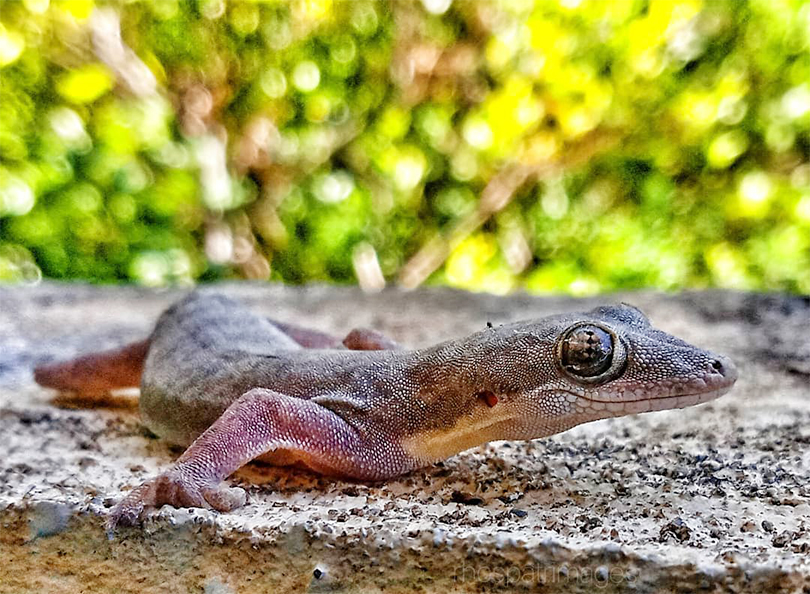
Common House Gecko (Hemidactylus frenatus): It is a gecko native to South and Southeast Asia as well as Near Oceania. It is also known as the Asian house gecko, Pacific house gecko, wall gecko, house lizard, tiktiki, chipkali or moon lizard. Most geckos are nocturnal, hiding during the day and foraging for insects at night. They can be seen climbing walls of houses and other buildings in search of insects attracted to porch lights, and are immediately recognisable by their characteristic chirping. They grow to a length of between 7.5–15 cm (3–6 in), and live for about 7 years.
21 / 21
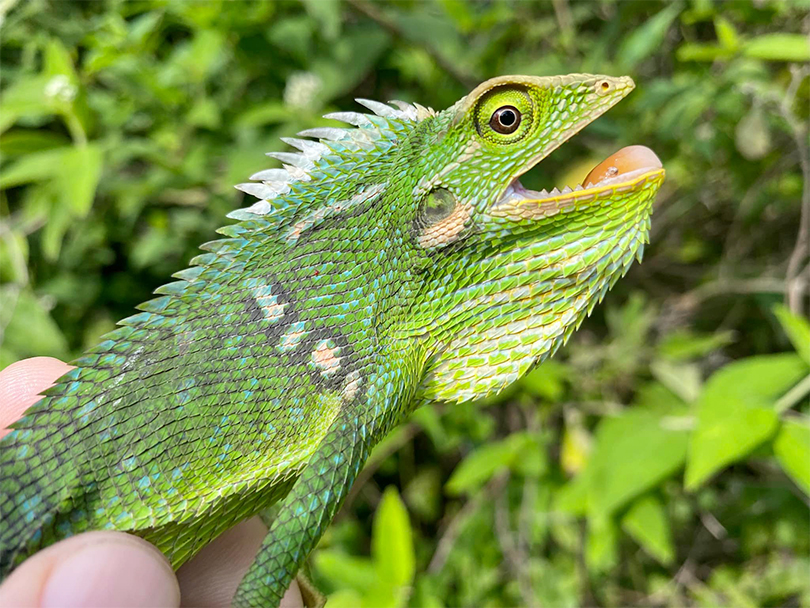
Maned Forest Lizard (Bronchocela jubata): This species is commonly known as maned forest lizard. This lizards are found mainly in Indonesia on the islands of Singkep, Java, Bali, Sulawesi, Karakelang, Salibabu; Nias Island, Singkap Island, Borneo (Kalimantan) also in Thailand, Cambodia and Philippines. Since they live high in the trees, they eat a diet of insects that live there, too. Unfortunately, deforestation and climate change have hurt the numbers of Maned Forest Lizards. Consequently, they are on the ICUN Red List of Threatened Species.

